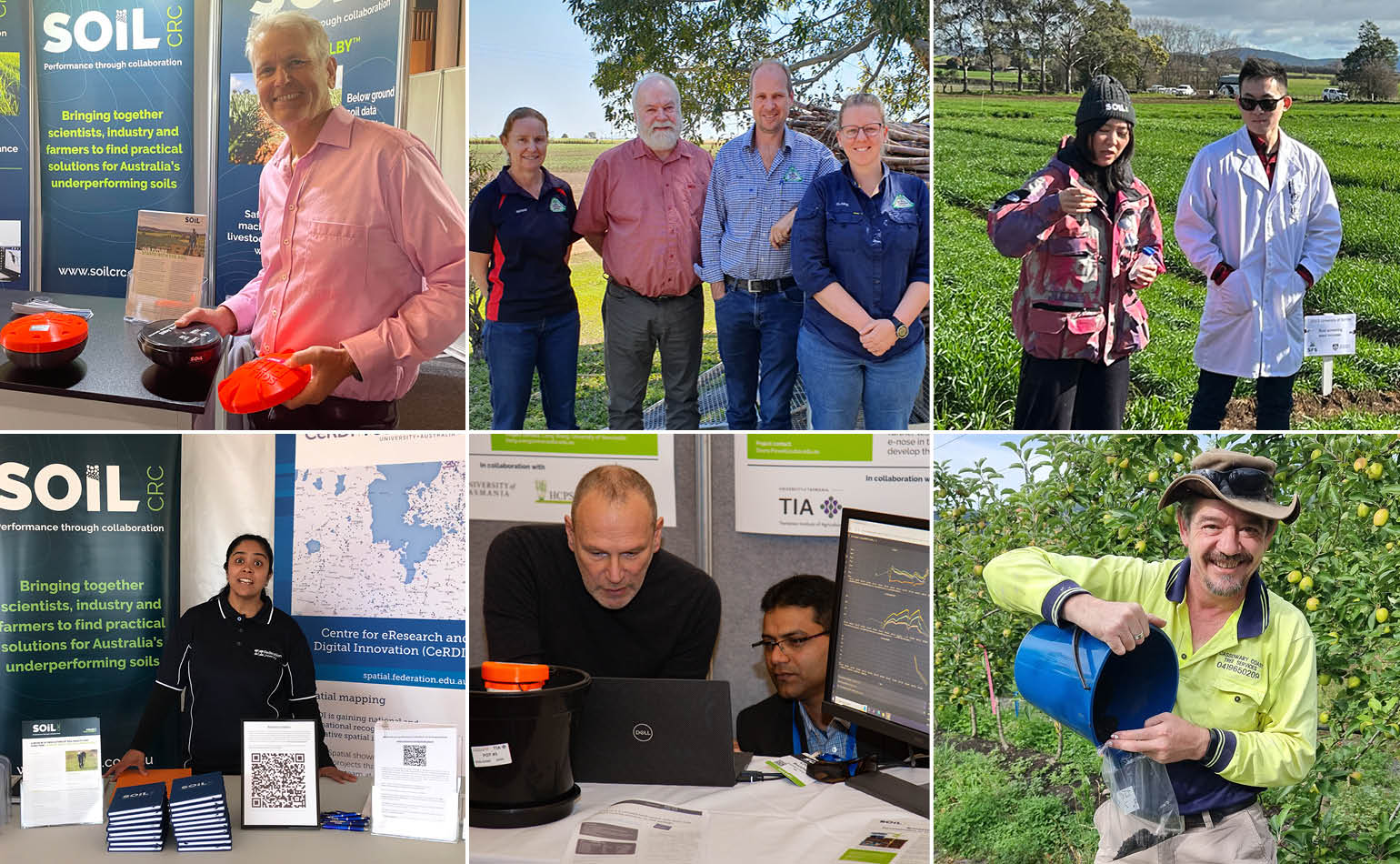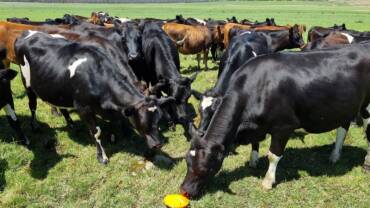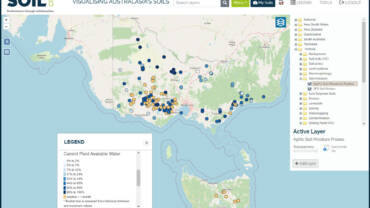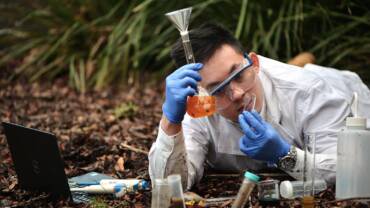Program spotlight: Soil performance metrics
| Posted Apr 15,2024Program 2 of the Soil CRC seeks to define the indicators of soil performance, create better tools for on-farm soil measurement and develop better systems for managing soil data. Program Leader Associate Professor Richard Doyle from the University of Tasmania said that farmers need to measure soil performance accurately and quickly to effectively manage their soils.
“Currently, the cost and time involved in measuring soil performance can be prohibitive, and the results varied,” he explained. “Program 2 brings together twenty grower groups, six universities, two government research partners and 11 PhD students to develop a range of technologies that will enable farmers to cost-effectively and efficiently collect data for monitoring soil performance.”
“Our researchers have been focussed on finalising the development of an underground wireless communication node for transmitting soil data, an electronic nose for sensing soil gases, and an advanced penetrometer for mapping and measuring soil moisture, compaction and salinity,” Professor Doyle said.
“These devices—known as the BILBY®, QUOLL™ e-Nose and BANDICOOT®, respectively—will put easy-to-use technology in the hands of farmers, giving them improved soil data to better inform their decision-making.”
We’re also continuing to develop the Soil CRC’s ‘Lab-on-a-Chip’ technology, which integrates a 3D-printed micro-fluidic device with a smartphone app to measure soil nutrients. Our project team has produced prototypes for soil nitrate and soil pH, with efforts now focused on the detection of soluble phosphorus.
We’re now looking to commercialise these products, with the Soil CRC securing registered trademarks for both the BILBY® and BANDICOOT®. Soil CRC researchers are also looking at options to advance the ‘Lab-on-a-Chip’ technology to measure soluble organic carbon and biological properties.
Professor Doyle said the second phase of the Visualising Australasia’s Soils (VAS) project is well underway and involves working with farmer groups on data storage, access and sharing, along with linking the display of available paddock- and farm-scale soil moisture maps and point data.
“We’re continuing to engage with participating farmer groups to develop use-cases for VAS and define the value proposition of sound soil data storage, sharing and management,” he said.
A related project is advancing our understanding of data management across the Soil CRC and highlighting the need for improved training and understanding of what metadata should be reported with the various soil data sets we generate.
Dr Doyle further highlighted our soil performance indicators project, which wrapped up earlier this year. The project has increased our understanding of farmers’ use and comprehension of the value of various soil performance indicators and how these are linked to farming systems and key soil types.
“We’re also working on gaining a better understanding of soil biological indicators and their use and effectiveness in soil health assessment,” he said.
Across Program 2, our PhD students are at various stages of their candidature. Their research work covers many areas, from improving our understanding of soil biological health, to the use of various types of remote sensing to better sense and resolve soil properties, along with advancing knowledge of spatial variations.
“It has been a privilege to be involved in the supervision of some of our PhD students and to witness their passion for soil science and the development of their research,” Dr Doyle said.
“That’s a real legacy of the Soil CRC – developing people, from our project leaders to our PhD students – and it will be great to see that development continue over the remaining three years of the Soil CRC.”
You can read more about PhD student Reuben Mah (University of Tasmania), and his involvement with the Soil CRC’s ‘Lab-on-a-Chip’ technology, in our April student profile.
Watch our 2023 Program 2 update
Find out more
View: Soil CRC”s current projects
Related article: Next-gen soil sensors on the horizon
Related article: Visualising Australasia’s Soils: extending the soil data federation





